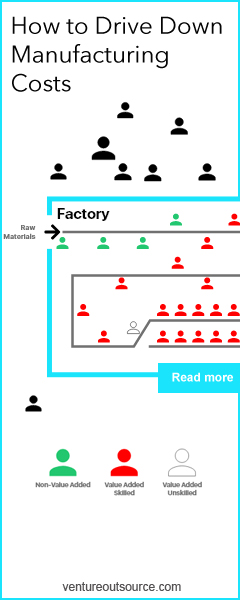 Question [statement] from EMS industry COO:
Question [statement] from EMS industry COO:
“EMS will always have thin margins, which is due to the large percent of “pass through” component cost reflected in both price and cost, diluting margins. As you probably know, ROI is a function of both margin and asset turnover. [Company name] embraces this idea which provides for our high levels of throughput, capacity utilization, and asset turnover. Therefore our ROI will be superior to our competitors, and will provide an attractive return to investors.
We have found that proprietary in-house software solutions are the norm in this industry. [Our] approach is different, going with off the shelf software from industry leading (best practice) providers in equipment automation and smart factories. By implementing an off the shelf IT model, we can easily, and inexpensively, update our systems with the latest software releases and take full advantage of the latest capabilities offered.”
Response from Venture Outsource:
EMS thin margins are not due to large pass through. This is an easy answer because few EMS want to do the difficult lifting.
Working capital is tied up in operational deficiencies and in inventory, the latter is the easy target. Look at Jabil’s last 10k, then ask yourself why is inventory so poorly managed in an industry that says MCOG is so important?
Some reasons margins are ‘perceived’ to be thin stem from, first, EMS providers making false claims and customers and, second, prospects not fully understanding EMS business models – particularly F,G&A and S,G&A, plus knowing about poorly trained EMS management and little accountability across EMS functional teams (indirect and direct labor) internal EMS factories, and thus allowing lower manufacturing execution efficiency despite EMS divisions appearing to be effective hitting their quarterly forecasts. Habitual thinking in the EMS industry is keeping EMS management from moving outside their comfort zone and OEM customers are paying for it in higher hard costs and lost opportunity costs
SEE ALSO
How EMS manufacturers incorrectly calculate direct labor
How to drive costs from your EMS manufacturing product portfolio
EMS providers have been managing spend and EMS customer operations wrong all of these years because they don’t know any better and didn’t have the right tools.
They’re thinking is, if I ship on time, I’m effective. But why not also reduce costs associated with getting FGI on the dock, plus ship on time, plus do so with fewer people while each person executes faster and with fewer mistakes? This is possible today but it requires understanding technology.
Jabil hasn’t been able to do this, neither has Flex, or Sanmina, Foxconn… SAP and Oracle also cannot do this. Their technology stacks are not complete despite Oracle’s acquisition of NetSuite with its previous claim on EMS. And all other platforms availabe today are more dashboard than innovation.
RELATED
Detailed analysis of manufacturing automation among Flex, Jabil, Sanmina, Celestica
EMS manufacturing industry contracts, clauses, forms, documents [$]
An artificial intelligence solution exists today for the business challenges and complex nature of the EMS industry where differentiation matters, but there is no individual OTS platform (or combined product) that can be put together without new IP.
Get list of EMS manufacturers for your requirements (Its free)
Save time and money. Find quality EMS manufacturers. Fast. Venture Outsource has a massive, global database of contract electronic design and manufacturing capabilities. Speak with a Provider Advisor.
“Was able to very quickly find details on the important elements of setting up EMS and ODM partnerships, talked with an advisor for personalized info on quality providers matching our requirements while getting up to speed quickly about the industry and connect with key staff from like-minded companies and potential partners. Great resource.”
— Jeff Treuhaft, Sr. Vice President, Fusion-IO
Advisors tell you matches we find for your needs, answer your questions and, can share EMS industry knowledge specific to your industries and markets.





